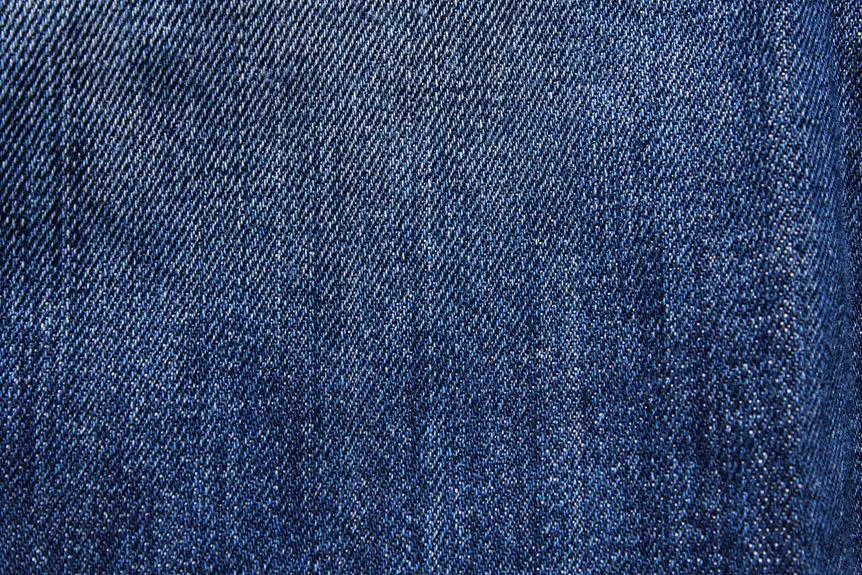Do you ever wonder what the thread count of your sheets really means?
Decoding Fabric: What Does Your Thread Count Mean is a comprehensive guide that will unravel the mysteries behind thread count and empower you with the knowledge to make informed fabric choices.
From understanding the factors affecting thread count to debunking common myths, this guide will equip you with the expertise to find the ideal thread count for your bedding.
Delve into the intricate world of fabric quality, care, and sleep comfort as you master the art of deciphering thread count.
Whether you're a bedding enthusiast or simply seeking a deeper understanding of textiles, this guide will provide you with the mastery you desire.
Key Takeaways
- Thread count represents the number of threads woven into one square inch of fabric.
- Higher thread count doesn't always guarantee better quality as fabric may become too dense, leading to reduced breathability and comfort.
- Fabric quality is not solely determined by thread count, factors like fabric type, weaving technique, and finishing also play crucial roles.
- Ideal thread count depends on personal preferences, desired fabric feel, comfort level, and weave type.
Understanding Thread Count
Understanding thread count starts with knowing that it represents the number of threads woven into one square inch of fabric. This measurement is crucial in determining the quality and feel of the fabric.
However, it's essential to be aware of the marketing tactics used in promoting thread count. Some manufacturers inflate their thread count numbers to mislead consumers. Therefore, measuring accuracy becomes a critical factor in determining the true quality of the fabric.
When it comes to measuring accuracy, it's important to note that thread count is calculated by adding the number of horizontal (weft) and vertical (warp) threads present in one square inch of fabric. This means that a higher thread count doesn't always guarantee better quality. In fact, once the thread count goes beyond a certain range, the fabric may become too dense, leading to reduced breathability and comfort.
Mastering the understanding of thread count involves looking beyond marketing ploys and focusing on the actual feel and quality of the fabric. By being aware of measuring accuracy and marketing tactics, you can make informed decisions when purchasing bed linens or clothing.
Factors Affecting Thread Count
To truly grasp the impact of thread count, you need to delve into the factors that directly influence its significance in fabric quality and comfort. Understanding these factors will provide you with insight into the manufacturing process and how it affects the final product. Here are the key factors affecting thread count:
- Yarn Size and Ply: The thickness of the yarn and the number of strands twisted together (ply) significantly impact thread count. Finer yarn and multi-ply threads generally result in higher thread counts, contributing to a smoother and more luxurious fabric.
- Weaving Technique: The method used to weave the threads together, such as percale or sateen weaves, can affect the perceived thread count. Some weaving techniques allow for a tighter weave, enhancing the fabric's perceived thread count and overall feel.
- Fabric Material: Different materials have varying natural limitations on thread count due to their inherent characteristics. For instance, cotton may have a different maximum thread count compared to silk due to the nature of the fibers and their ability to be tightly woven.
Understanding these factors and their influence on the manufacturing process can help you make more informed decisions when selecting fabrics based on thread count.
Thread Count Vs. Fabric Quality
When it comes to thread count and fabric quality, understanding the impact on the fabric can help you make informed purchasing decisions.
The relationship between thread count and fabric quality is crucial in determining the overall feel and durability of the material.
Thread Count and Quality
When evaluating fabric quality, it's essential to understand that thread count plays a significant role.
- Thread Count Accuracy
- Thread count accuracy is crucial for determining fabric quality.
- Myth: Higher thread count always means better quality. Some manufacturers inflate thread counts by using multi-ply yarns, which can compromise fabric quality.
- It's important to look for thread count information from reputable sources and manufacturers to ensure accuracy.
Thread count isn't the sole determinant of fabric quality. Understanding its accuracy and debunking common myths about thread count can help you make more informed decisions when purchasing fabrics.
Impact on Fabric
Ensure that the thread count accurately reflects the fabric quality by examining the impact of thread count on fabric. Thread count significantly influences fabric durability and comfort level.
A higher thread count often results in a finer, softer fabric that feels smoother against the skin. This is due to the fact that a higher thread count means there are more threads tightly woven together, resulting in a smoother and more luxurious feel.
Additionally, a higher thread count generally indicates a tighter weave, which can enhance the fabric's durability. However, it's important to note that fabric quality isn't solely determined by thread count. Other factors such as the type of material and finishing processes also play a crucial role in determining the overall quality and feel of the fabric.
Debunking Thread Count Myths
You may have heard that a higher thread count always means better quality, but that's not necessarily true. Thread count accuracy can vary, and some manufacturers may inflate their numbers to make their products seem more luxurious.
It's important to prioritize quality over quantity when it comes to thread count, as factors like the type of fabric and the weaving technique also play a significant role in determining the overall comfort and durability of the material.
Thread Count Accuracy
To understand thread count accuracy, focus on the actual number of threads woven into the fabric rather than relying solely on marketing claims. When evaluating thread count accuracy, consider the following factors:
- Thread Count Consistency: Examine the fabric for consistency in the thread count. Inconsistencies may indicate inaccurate or inflated thread counts.
- Look for variations in the density of the weave and inspect the fabric against a light source to identify any irregularities.
- Check for uniformity in the thickness of the threads across the fabric, as discrepancies may signal inaccurate thread count claims.
- Investigate the reputation and credibility of the manufacturer or brand to determine the likelihood of accurate thread count representation.
Quality Over Quantity
Debunk common misconceptions about thread count and prioritize quality over quantity when selecting fabric for your needs. Many believe that a higher thread count equates to better quality, but thread density is just one factor to consider. Weave type also plays a crucial role in the fabric's durability and comfort. A higher thread count doesn't always mean a softer fabric. Instead, focus on the weave type that suits your preferences. For instance, percale weaves are known for their crisp and cool feel, while sateen weaves offer a smoother and silkier touch. Prioritizing quality over quantity involves looking beyond thread count and understanding how weave type contributes to the overall comfort and durability of the fabric.
| Factor | Description | Impact |
|---|---|---|
| Thread Density | Number of threads per square inch | Durability |
| Weave Type | Pattern of how the threads are woven together | Comfort |
Finding the Ideal Thread Count
When selecting the ideal thread count for your sheets, consider the balance between comfort and durability. Understanding the thread count comparison and dispelling thread count myths are crucial for making an informed decision.
- Thread Count Comparison
- Look for a thread count between 200 and 400 for a balance of softness and breathability.
- Higher thread counts may not necessarily offer added comfort.
- Consider the fabric type alongside thread count.
- For example, a 400-thread count cotton sheet may feel softer than a 600-thread count polyester sheet.
- Keep in mind that a well-constructed sheet with a lower thread count can outperform a poorly constructed sheet with a higher thread count.
- Thread Count Myths
- Myth: Higher thread count always means better quality.
- Reality: Beyond a certain point, increases in thread count don't significantly improve the quality of the sheets.
- Myth: Thread count is the sole indicator of sheet quality.
- Reality: Factors such as fiber quality, weave, and finishing also play crucial roles in determining the overall quality of sheets.
- Myth: Thread count directly correlates with softness.
- Reality: Other factors, such as fabric type and weave, contribute to the softness of sheets.
Understanding these aspects will help you make an informed choice and find the ideal thread count for your sheets.
Caring for High Thread Count Fabrics
Once you have selected high thread count fabrics for your sheets, it's important to understand how to properly care for them to maintain their luxurious feel and durability.
High thread count fabrics, such as those with a count of 400 or higher, require special attention to keep them in pristine condition. When laundering these fabrics, it's crucial to use a gentle cycle with mild detergent to prevent damage to the delicate fibers.
Avoid using bleach or fabric softeners as these can break down the fibers and reduce the fabric's longevity. Additionally, it's recommended to wash high thread count fabrics separately to prevent friction with rougher fabrics that can cause pilling or damage.
After washing, tumble dry on a low heat setting and promptly remove the linens to prevent wrinkles. Ironing at a low temperature can help maintain the fabric's smooth finish, but it's essential to avoid high heat as it can weaken the fibers.
Thread Count and Sleep Quality
How can thread count affect your sleep quality?
Thread count plays a crucial role in determining the quality of your sleep. Here's how it impacts your sleep comfort and material durability:
- Breathability: Higher thread count fabrics often have a tighter weave, which can reduce breathability. This may lead to trapping heat and moisture, causing discomfort during sleep.
- *Consideration*: Look for a balance between thread count and breathability, especially if you tend to sleep hot.
- Softness: A higher thread count can contribute to a softer feel, enhancing your sleep comfort. However, it's essential to consider the type of material used as it greatly influences the overall softness and feel of the fabric.
- *Material Choice*: Opt for high-quality materials like Egyptian cotton or bamboo, which can provide both high thread count and exceptional softness.
- Durability: While higher thread count sheets are often associated with better quality, the durability of the material also depends on the type of fibers used. Pay attention to the material composition to ensure longevity and resistance to wear and tear.
- *Longevity*: Consider a blend of durable fibers like polyester or long-staple cotton to ensure longevity despite a high thread count.
Frequently Asked Questions
How Can Thread Count Affect the Durability of the Fabric?
A higher thread count can improve fabric strength and durability. The impact of thread count on the durability of the fabric is significant. Higher thread count usually means a tighter weave, resulting in a more durable fabric.
Is There a Difference in Thread Count Between Natural and Synthetic Fabrics?
In natural fabrics, like cotton, thread count measures the number of threads per square inch. Synthetic fabrics, such as polyester, can also have thread counts, but the significance may vary due to differences in material properties.
Can Thread Count Affect the Breathability of the Fabric?
Higher thread count can affect fabric breathability and comfort. A higher thread count means tighter weave, which may reduce air circulation. Pay attention to thread count and consider how it may impact the breathability of the fabric.
Does Thread Count Impact the Appearance and Feel of the Fabric?
Higher thread count generally results in a smoother, softer fabric, enhancing comfort. It also contributes to a finer texture, providing a luxurious feel. Understanding thread count's influence on appearance and feel is crucial for fabric selection.
Are There Any Specific Washing or Maintenance Tips for High Thread Count Fabrics?
To maintain high thread count fabrics, use a gentle wash cycle with cold water and mild detergent. Avoid bleach and fabric softeners. Tumble dry on low heat or air dry to prevent damage. Iron on a low setting if necessary.
- Is Cotton Sateen a Good Fabric for Quilting? Pros and Cons - June 21, 2025
- Exploring Sateen Weaves: A Guide to Rayon, Polyester, and Bamboo Sateen - June 21, 2025
- Pima vs. Supima Sateen: A Definitive Comparison of Premium Cottons - June 21, 2025





